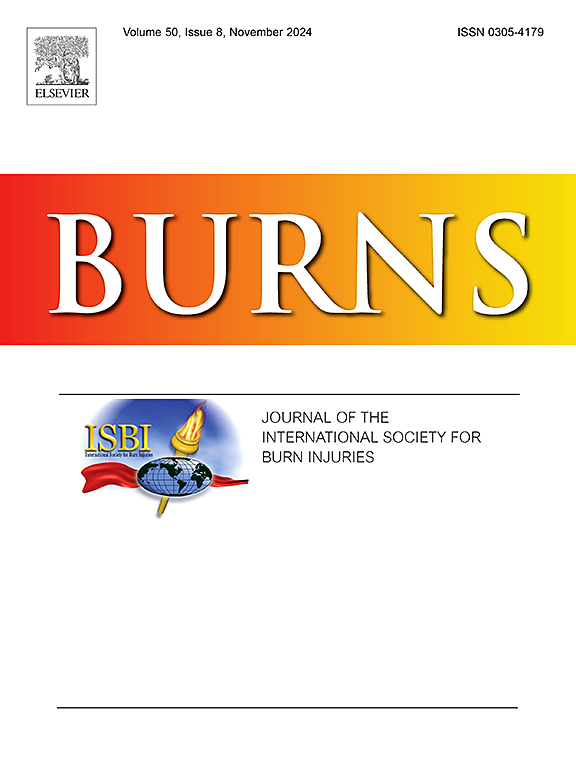Absorbable Meek skin graft material transplantation: A preliminary experimental study
IF 3.2
3区 医学
Q2 CRITICAL CARE MEDICINE
引用次数: 0
Abstract
Background
Wound closure is the core issue in treating patients with extensive burns. Allogeneic grafts can serve as a suitable temporary substitute in third-degree burns, and the Meek technique has provided encouraging outcomes in recent decades. However, whether allografts and the Meek technique could be used simultaneously so as to leverage the strengths of both has not been extensively examined. Therefore, we aimed to develop absorbable Meek skin graft materials to achieve transplantation of allografts and autografts in a single step.
Methods
Regenerated cellulose was used to make absorbable MEEK materials. The allogeneic skin donor and graft recipient were both pigs. Full-thickness skin excision wounds were made on both sides of the back as experimental and control groups respectively. The experimental group was transplanted with absorbable Meek material, which was then covered with an overlay of allografts. The control group was transplanted with Meek micrografting. Gross appearance and histology of the grafts were compared, as well as the level of four inflammatory factors in tissue samples.
Results
In the early postoperative period, there was little exudation of the wound and the allografts were viable. In the next few days, a thin eschar had formed on the surface of the allografts and the allografts transformed into a crust, and then separated from the wound. The wound healed by day 28. In the control group, the wound exudate was significantly more than that in the experimental group and most wounds had basically healed by day 21. Histology of allografts appeared intact by day 7, but the abundance of epidermal cells decreased, and then almost disappeared. Epithelialization was almost complete by day 28 in the experimental group,which was slightly later than in the control group. There were no significant differences in the level of inflammatory factors.
Conclusions
The use of absorbable Meek skin graft materials allowed for the transplantation of autologous and allogeneic skin grafts in one step and can be expected to have a positive impact on the clinical treatment of extensive burn injuries. However, further improvements are needed to accelerate wound repair.
求助全文
约1分钟内获得全文
求助全文
来源期刊

Burns
医学-皮肤病学
CiteScore
4.50
自引率
18.50%
发文量
304
审稿时长
72 days
期刊介绍:
Burns aims to foster the exchange of information among all engaged in preventing and treating the effects of burns. The journal focuses on clinical, scientific and social aspects of these injuries and covers the prevention of the injury, the epidemiology of such injuries and all aspects of treatment including development of new techniques and technologies and verification of existing ones. Regular features include clinical and scientific papers, state of the art reviews and descriptions of burn-care in practice.
Topics covered by Burns include: the effects of smoke on man and animals, their tissues and cells; the responses to and treatment of patients and animals with chemical injuries to the skin; the biological and clinical effects of cold injuries; surgical techniques which are, or may be relevant to the treatment of burned patients during the acute or reconstructive phase following injury; well controlled laboratory studies of the effectiveness of anti-microbial agents on infection and new materials on scarring and healing; inflammatory responses to injury, effectiveness of related agents and other compounds used to modify the physiological and cellular responses to the injury; experimental studies of burns and the outcome of burn wound healing; regenerative medicine concerning the skin.
 求助内容:
求助内容: 应助结果提醒方式:
应助结果提醒方式:


